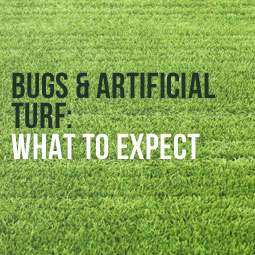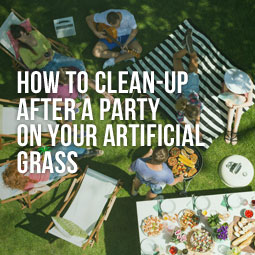 New technology when it comes to artificial turf has made it almost impossible for people to tell the difference between natural grass and a synthetic lawn. The vibrant colors, thick texture and quality workmanship makes it a worthwhile investment for many homeowners who want to limit the amount of time spent maintaining their lawns and reduce their impact on the environment. With its versatility, artificial turf can be used for the entire lawn, a deck or patio or recreational areas. Pets can even benefit from its use in kennels or dog runs.
New technology when it comes to artificial turf has made it almost impossible for people to tell the difference between natural grass and a synthetic lawn. The vibrant colors, thick texture and quality workmanship makes it a worthwhile investment for many homeowners who want to limit the amount of time spent maintaining their lawns and reduce their impact on the environment. With its versatility, artificial turf can be used for the entire lawn, a deck or patio or recreational areas. Pets can even benefit from its use in kennels or dog runs.
Brushing or Raking
The infill used to stabilize the grass of a synthetic lawn is designed to help keep the blades standing upright. In areas where traffic volume is high or children and pets tend to spend most of their time, the infill can become compacted and the blades of grass become matted or tend to lay flat. To prevent this from occurring, use a broom or soft rake to brush and fluff the fibers back into their original position. This doesn't need to be done every day. Instead, watch for paths or flat spots to develop in your lawn. If you brush them when they first begin to appear, they will be less noticeable and no one will be able to tell you have a synthetic lawn.
Check Infill Levels Regularly
Certain types of infill, normally sand and sand/silica or sand/gravel mixes, can become compacted. This results in an extremely hard surface and can cause the grass blades to end up going in different directions. Infills with a sand base can also hold moisture causing them to become brick like and retain odors. You can prevent this from becoming a problem by using a soft rake to gently break up the infill and loosen the particles. There may be times when the infill begins to erode. If you notice areas in your synthetic lawn where the infill isn't as prevalent as it should be, contact your installer and have them replenish the amount of infill. It is important to have adequate amounts of infill throughout the lawn to help it retain its natural look and feel.
Be Mindful Of Your Pets
Your pets can be extremely hard on a natural grass lawn. They can also be hard on a synthetic lawn. Most types of artificial turf can handle all types of wear and tear when it comes to pets. The materials used to construct the mesh fabric base of the artificial lawn is extremely resilient and durable. It can withstand your pets' digging and scratching without fraying or weakening. One of the biggest problems with your pet digging is that it loosens the pins and stakes used to hold the turf firmly in place. If those are loosened, the seams in the turf may begin to show. It's important to watch your pets, however, and try to keep them from digging in the same area over and over again.
Another way pets can damage a synthetic lawn is through their bathroom habits. Going in the same area every time can lead to a build up of mineral salts and organic components that can lead to discoloration or fading. To prevent this type of issue, always make sure to remove any solid waste and debris. You should also hose down areas where animals tend to urinate. This eliminates the build up of organic compounds and residue that may damage the turf over an extended period of time.
All in all, you don't need to spend a lot of time making sure your synthetic lawn looks real. It will do that all on its own with only a minimum amount of care. The key is being observant and checking your lawn on a regular basis.











